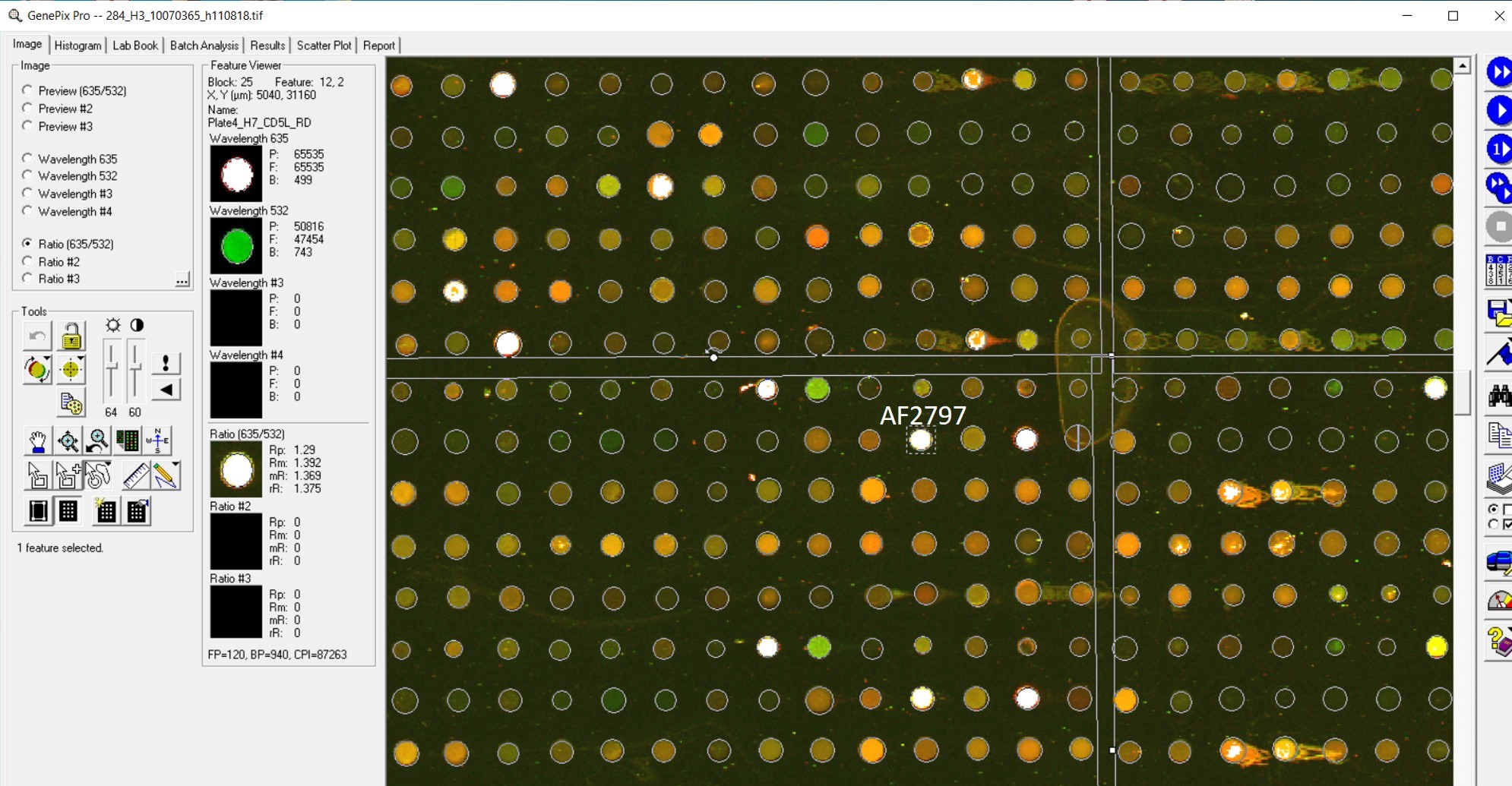Human CD5L Antibody Summary
Ser20-Gly347
Accession # O43866
Applications
Please Note: Optimal dilutions should be determined by each laboratory for each application. General Protocols are available in the Technical Information section on our website.
Scientific Data
 View Larger
View Larger
CD5L in Human Spleen. CD5L was detected in immersion fixed paraffin-embedded sections of human spleen using Goat Anti-Human CD5L Antigen Affinity-purified Polyclonal Antibody (Catalog # AF2797) at 5 µg/mL for 1 hour at room temperature followed by incubation with the Anti-Goat IgG VisUCyte™ HRP Polymer Antibody (VC004). Before incubation with the primary antibody, tissue was subjected to heat-induced epitope retrieval using Antigen Retrieval Reagent-Basic (CTS013). Tissue was stained using DAB (brown) and counterstained with hematoxylin (blue). Specific staining was localized to lymphocytes. Staining was performed using our protocol for IHC Staining with VisUCyte HRP Polymer Detection Reagents.
Reconstitution Calculator
Preparation and Storage
- 12 months from date of receipt, -20 to -70 °C as supplied.
- 1 month, 2 to 8 °C under sterile conditions after reconstitution.
- 6 months, -20 to -70 °C under sterile conditions after reconstitution.
Background: CD5L
CD5L (CD5 antigen-like), also known as Sp alpha and AIM, is a 50 kDa secreted glycoprotein that belongs to the SRCR (scavenger receptor cysteine rich) group B family of proteins. Group B proteins are distinguished by SRCR domains that are encoded by a single exon (1 - 3). The human CD5L cDNA encodes a 347 amino acid (aa) precursor that includes a 19 aa signal sequence and three SRCR domains (4, 5). Among group B proteins, CD5L is most closely related to CD5 and CD6, with which it shares 18% and 31% aa sequence identity, respectively. CD5L is up-regulated in macrophages at inflammatory sites. It sustains inflammatory reactions by both increasing the phagocytic capacity of macrophages and impeding the apoptosis of local macrophages, NK cells, and T cells (6, 7). Agonists of the LXR and RXR nuclear hormone receptors induce CD5L upregulation in macrophages and reduce macrophage apoptosis (8, 9). Oxidized LDL (which acts through LXR/RXR) is taken up by macrophages, promoting their development into foam cells. The increased level of CD5L protects foam cells from apoptosis but permits more rapid cellular accumulation and atherosclerotic plaque formation (9). In activated B cells, however, the combination of CD5L and TGF-beta inhibits proliferation. The binding of CD5L to splenic B cells is increased following TGF-beta exposure, suggesting that TGF-beta increases the expression or availability of an unidentified CD5L receptor (5, 10). CD5L also functions as a pattern recognition molecule by binding both lipoteichoic acid on Gram positive and lipopolysaccharide on Gram negative bacteria (11). In the thymic cortex, CD5L protects cortical CD4+CD8+ thymocytes from apoptosis (12). CD5L circulates in the serum in complex with IgM (13).
- Sarrias, M.R. et al. (2004) Crit. Rev. Immunol. 24:1.
- Resnick, D. et al. (1994) Trends Biochem. Sci. 19:5.
- Mukhopadhyay, S. and S. Gordon (2004) Immunobiology 209:39.
- Gebe, J.A. et al. (1997) J. Biol. Chem. 272:6151.
- Gebe, J.A. et al. (2000) Immunol. 99:78.
- Haruta, I. et al. (2001) J. Biol. Chem. 276:22910.
- Kuwata, K. et al. (2003) Am. J. Pathol. 162:837.
- Valledor, A.F. et al. (2004) Proc. Natl. Acad. Sci. 101:17813.
- Arai, S. et al. (2005) Cell Metab. 1:201.
- Yusa, S. et al. (1999) Eur. J. Immunol. 29:1086.
- Sarrias, M-R. et al. (2005) J. Biol. Chem. 280:35391.
- Miyazaki, T. et al. (1999) J. Exp. Med. 189:413.
- Tissot, J.D. et al. (2002) Electrophoresis 23:1203.
Product Datasheets
Citation for Human CD5L Antibody
R&D Systems personnel manually curate a database that contains references using R&D Systems products. The data collected includes not only links to publications in PubMed, but also provides information about sample types, species, and experimental conditions.
1 Citation: Showing 1 - 1
-
A proteomic strategy to identify novel serum biomarkers for liver cirrhosis and hepatocellular cancer in individuals with fatty liver disease.
Authors: Gray J, Chattopadhyay D, Beale GS
BMC Cancer, 2009-08-05;9(0):271.
Species: Human
Sample Types: Serum
Applications: ELISA Development
FAQs
No product specific FAQs exist for this product, however you may
View all Antibody FAQsReviews for Human CD5L Antibody
Average Rating: 4.3 (Based on 4 Reviews)
Have you used Human CD5L Antibody?
Submit a review and receive an Amazon gift card.
$25/€18/£15/$25CAN/¥75 Yuan/¥1250 Yen for a review with an image
$10/€7/£6/$10 CAD/¥70 Yuan/¥1110 Yen for a review without an image
Filter by:


